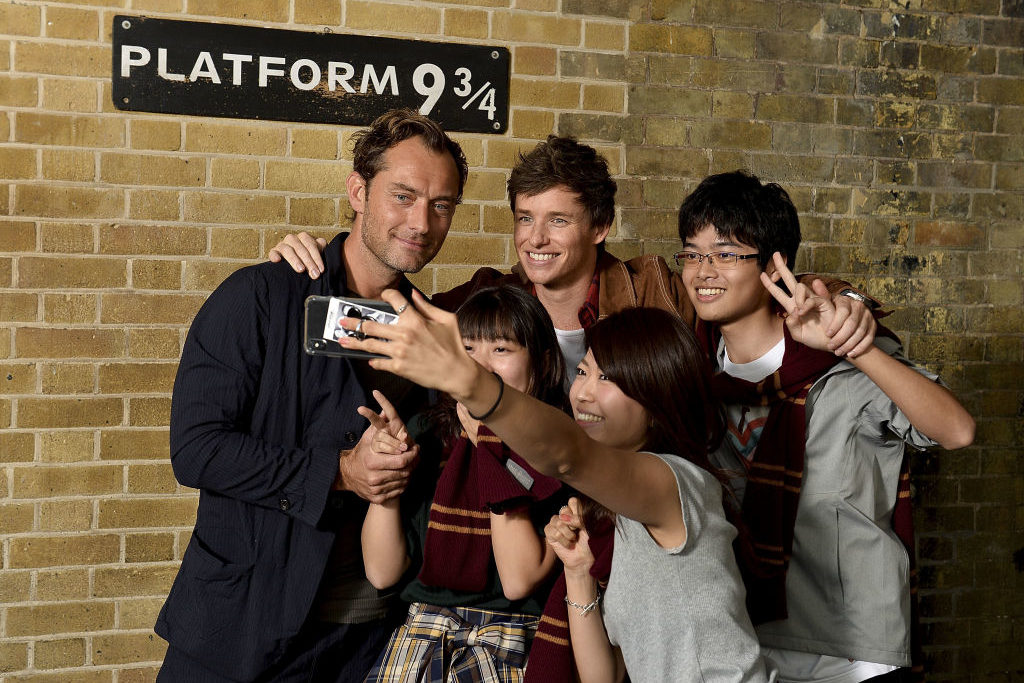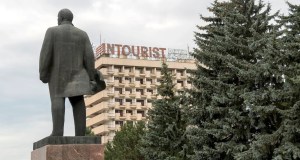It was shortly after noon on a Sunday in Edinburgh, and I was attempting to remedy my jet lag at the local BrewDog outpost with a pint of sour ale and a large helping of pizza. I’d flown in on the red-eye from New York to attend a conference, hadn’t had much sleep, and initially thought I was hallucinating when I saw that one of the few other patrons in the bar was a notably tipsy woman wearing wizard robes, waving a wand around as she talked to her drinking companions. They were, I noted, red and gold robes: Gryffindor. (Professor Minerva McGonagall, Gryffindor House’s notoriously strict faculty overseer, would be unlikely to approve of such drunken behavior in public.)
I would soon learn that this was not a particularly odd sight in Edinburgh, where it seems that half the summer tourists show up primarily because they’re rabid fans of Harry Potter, Game of Thrones, or Outlander, all of which have creative ties to the area. Distilleries tout the Game of Thrones-themed line of scotch whiskies; a quick Google search reveals that the number of companies offering tours of Outlander filming locations is in the double digits; and Potter-themed shops dot the city’s high street. Then there are the ghost tours, an intensely competitive business in which each guide company insists that only they have permission (from who? The ghosts?) to take tourists to particular haunted jail cells or mausoleums or what-have-you. It wasn’t long before I felt comfortable drawing the conclusion that Edinburgh had the highest concentration of shamelessly nerdy tourists of any place I’d ever been, and I grew up in a town that runs Albert Einstein-themed tours on ‘Pi Day.’
You may assume I’m going to mock this phenomenon. Quite the contrary: I wish every city’s tourism sector was so heavily dominated by people who had invested hours (if not years) of their lives in history, or in cinematic and literary epic universes. In an Instagram-addled travel climate where would-be influencers flock to take pictures in front of a picturesque blue lake that got its color because it’s a chemical waste dump and where the scene in front of the Mona Lisa looks like a G7 summit press conference, there’s something quaint about a place where tourists care more about the story than the selfie. Even if that story is fiction or folklore.
Later on that Sunday, I joined a ‘haunted cemetery’ tour that wandered its way through Greyfriars – home to multiple plots whose long-dead residents allegedly inspired multiple character names in the Harry Potter series. The ghosts didn’t show up, to my knowledge. But the real appeal of the tour was the guide’s ability to tell a good story; he filled us with graveyard lore that he then debunked as inaccurate or fabricated. This all led up to the tale of an alleged poltergeist in a tomb, which was conspicuously not debunked. He had a knack for getting the audience to trust his sense of skepticism – so, clearly, that poltergeist had to be the real deal. For tourists in the social media age, a quality walking tour can reawaken the centuries-old appeal of the first-person travelogue, to understand that a city is as much about its oral history and legends as it is about how good the spire of the local cathedral will look in an Instagram photo with the Gingham filter applied. Perhaps it was because I was in town for an event hosted by TED, a company with a commitment to narrative storytelling, but I found a distinct and resonant romance in the idea of traveling with few priorities other than to hear stories. And then it occurred to me: what has happened to make this seem novel in the first place?
Of course, the fans of film and literature aren’t always model tourists, and concerns about ‘overtourism’ apply to destinations they frequent, too. For years Dubrovnik in Croatia has been struggling with an onslaught of tourists whose primary motive is to see the medieval walled city that stood in for King’s Landing on Game of Thrones. (A history tour guide in Dubrovnik told The New York Times that she ‘can’t count how many people have asked how long it took HBO to build the city’s walls.’) Fandom resides on a spectrum, too; it’s unclear how many of the people showing up to take bikini selfies at the site of the Chernobyl disaster actually have seen any of the eponymous miniseries that prompted a spike in tourism to the region. And I can imagine that plenty of Edinburgh locals find the tourists roaming their streets to be just as irritating as we New Yorkers do when a lovely al fresco spot for brunch turns out to be along the warpath of the Sex and the City walking tours that are, inexplicably, still popular.
But my point stands. Lately, it’s become trendy for travel brands to engage in ‘flight shaming,’ to encourage tourists to travel less or to keep their jaunts closer to home in the name of environmental consciousness. There’s something elitist to this messaging, suggesting that ordinary travelers ought to get in their place and leave the world’s remaining pristine destinations to the few who are able to afford eco-conscious, carbon-offsetting, farm-to-table tour packages rather than Ryanair tickets. Nevertheless, perhaps we could turn a stronger eye to reintroducing emotion and passion into travel – choosing destinations because they connect to something that we love deeply, not because there was a cheap fare on Kayak or you’re chasing an Instagram hotspot.
In a world obsessed with the fast, the immediate, and the like-and share-able, we could learn a thing or two from that robe-clad tourist waving her wand around with sheer delight in an Edinburgh pub: seven books and eight movies and goodness knows how many hours spent in online forums had brought her to where she was. May we all travel for our own loves, rather than for others’ ‘likes.’


















